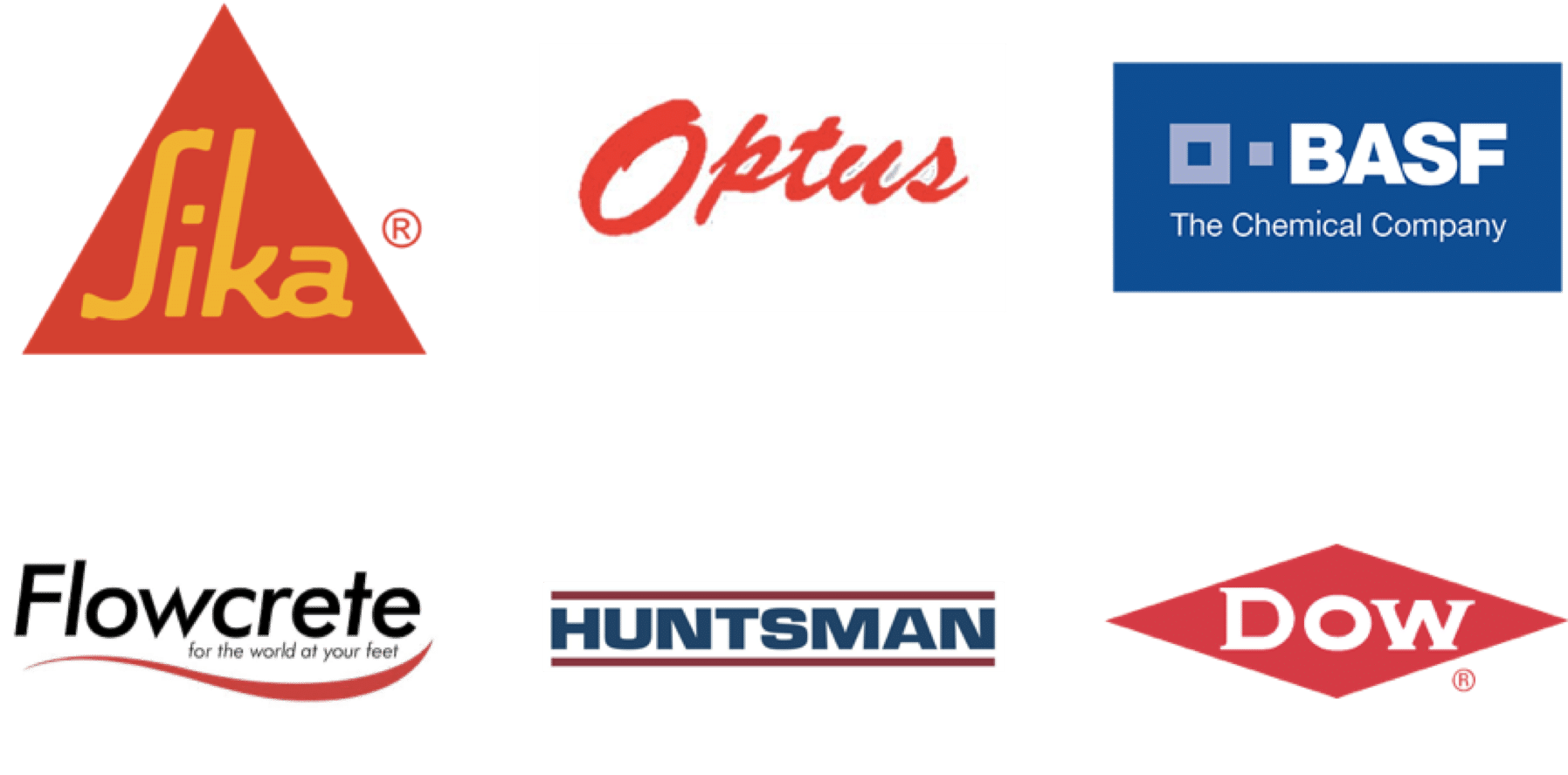High-performance vinyl ester linings for secondary containment.
Contact usProfessionally installed vinyl ester resin reinforced with glass fibre. Engineered to protect surfaces via mechanical, thermal and chemical resistance.
High-performance vinyl ester linings for secondary containment.
Contact usProfessionally installed vinyl ester resin reinforced with glass fibre. Engineered to protect surfaces via mechanical, thermal and chemical resistance.
Vinyl ester resin demonstrates excellent resistance to acids, alkalis, bleaches, solvents, and other chemicals - even at elevated temperatures. Realizing that there is no 'one-size-fits-all' system, a range of different compositions enable bespoke formulations towards specific products and conditions.
Combined with powder-bound glass fibre reinforcement and protected with a chemically resistant veil, the resultant composite acts as a highly durable barrier for underlying concrete. A final layer of vinyl ester topcoat, applied to the laminate, provides enhanced protection and aesthetics.
This makes them ideal for demanding chemical processing environments requiring compliance to HSE regulations.

Installation of a Vinyl Ester Bund Lining
Strandek offers a fully compliant, professional team with an excellent track record in linings and coatings.
Contact serviceRegulatory requirements stipulate that secondary containment bunds be able to remain impervious to chemical attack in the even of a leak or loss of integrity in the primary containment system.
Strandek offers high-performance bund linings to address this need.
Should a primary containment vessel breach occur, a Strandek-installed bund lining would ensure spilt materials are adequately contained and recoverable - with virtually no external contamination.
In Above Ground Storage Tanks (ASTs), the presence of hazardous liquids like acids, solvents and other harmful chemicals warrants the need for a reliable bund structure.
Part of the bund structure centres on the lining itself – that is, the inner coatings applied to the surface to prevent or delaying chemicals from contacting the underlying substrate and therefore allowing adequate time for control measures to be performed.
In the context of a bund lining system, bunds should be impermeable, present adequate corrosion resistance and have adequate strength and durability. It should also, where appropriate, demonstrate fire resistance.
The use of vinyl ester-based lining systems is ideal for this practice. Their broad chemical resistance and ability to be tailored towards certain applications means that full, compliant containment can be achieved in a cost-effective manner.
Resin-based surface protection requires a high degree of skill and expertise. Working with ISO9001- ISO14001-certified brands, we are able to select and test a range of different materials to ensure that our applicators use the best resin-based systems for every project.

Containment bunds are an important part of any industrial site holding large quantities of liquids. Navigating the framework around the condition of your bund, the integrity of its lining and the level of maintenance required is a key requirement. Here, Strandek provides an overview of such a framework to assist you in ensuring you bund is compliant.

Examples include hydrocarbons, acids and alkalines, as well as bleaches, solvents and oxidising agents, the ability of vinyl ester to bond to concrete, steel and other substrates renders it an effective lining and coating system.
The term “lining” in coatings technology refers to a material applied to the innser surface of a structure, such as a storage tank, bund or similar structure intended to provide protection from corrosive substances. Vinyl ester bund linings are either monolithic or built-up systems. As bund linings, they offer good adhesion to most substrates, with most instances being for either concrete or steel.
Vinyl ester bund linings have good adhesion to concrete provided that it is clean, dry and structurally sound. A coarse, abrasive blast finish is often desirable to render the concrete clean and free from contaminants.
Good chemical resistance between structured laminates and corrosive mediums requires the incorporation of a chemically resistant liner. A surface veil is recommended for any polymer composite intending to provide corrosion resistance. Veils are either C-glass or synthetic.
Industry-standard usually necessitates the inclusion of 1 – 2 layers of veil (90 % resin) with 2 piles of 450 g/m2 powder bound chopped strand matting (70 % resin). Behind this, a load-carrying laminate is built.
The base of the lining should be concrete with a low moisture content. A primer is also recommended to maximise bonding.
Ideally, reinforcement types and amounts should be selected to ensure mechanical properties are met.
Yes, flame retardant additives can be incorporated into the system. This will render the vinyl ester system flame retardant. Adding flame retardant features into the resin mixture is an area of study and Strandek works with leading manufacturers able to supply this grade of material. The IChemE Bunding at Buncefield report highlights the need for effective flame retardancy.